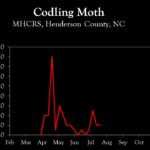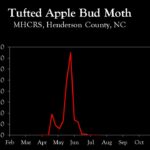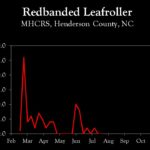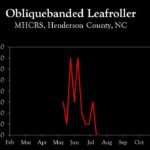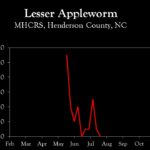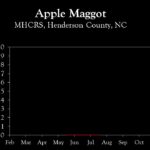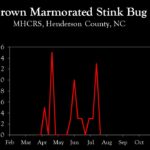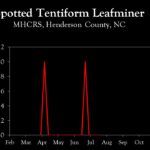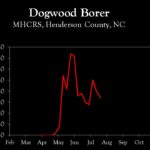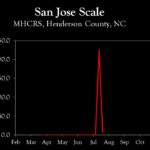WNC Orchard Insect Pest Populations – July 26, 2023
go.ncsu.edu/readext?947397
en Español / em Português
El inglés es el idioma de control de esta página. En la medida en que haya algún conflicto entre la traducción al inglés y la traducción, el inglés prevalece.
Al hacer clic en el enlace de traducción se activa un servicio de traducción gratuito para convertir la página al español. Al igual que con cualquier traducción por Internet, la conversión no es sensible al contexto y puede que no traduzca el texto en su significado original. NC State Extension no garantiza la exactitud del texto traducido. Por favor, tenga en cuenta que algunas aplicaciones y/o servicios pueden no funcionar como se espera cuando se traducen.
Português
Inglês é o idioma de controle desta página. Na medida que haja algum conflito entre o texto original em Inglês e a tradução, o Inglês prevalece.
Ao clicar no link de tradução, um serviço gratuito de tradução será ativado para converter a página para o Português. Como em qualquer tradução pela internet, a conversão não é sensivel ao contexto e pode não ocorrer a tradução para o significado orginal. O serviço de Extensão da Carolina do Norte (NC State Extension) não garante a exatidão do texto traduzido. Por favor, observe que algumas funções ou serviços podem não funcionar como esperado após a tradução.
English
English is the controlling language of this page. To the extent there is any conflict between the English text and the translation, English controls.
Clicking on the translation link activates a free translation service to convert the page to Spanish. As with any Internet translation, the conversion is not context-sensitive and may not translate the text to its original meaning. NC State Extension does not guarantee the accuracy of the translated text. Please note that some applications and/or services may not function as expected when translated.
Collapse ▲ Egg hatch of the second and third generation of codling moth and oriental fruit moth are about 25% complete, respectively, in Henderson County. In Cleveland County, second generation codling moth egg hatch is near completion, and fourth generation OFM egg hatch is just beginning. While populations have been low throughout the season throughout the area, pheromone trap captures in individual orchards should be the basis of management decisions.
Egg hatch of the second and third generation of codling moth and oriental fruit moth are about 25% complete, respectively, in Henderson County. In Cleveland County, second generation codling moth egg hatch is near completion, and fourth generation OFM egg hatch is just beginning. While populations have been low throughout the season throughout the area, pheromone trap captures in individual orchards should be the basis of management decisions.
Brown marmorated stink bug (BMSB): Last week’s BMSB degree-day accumulation calculations contained an error, with more DD actually accumulating than reported. However, population development is still behind that of previous years. BMSB DD accumulations in Henderson, Wilkes and Cleveland Counties is currently 557, 569 and 721 DD, respectively; at this time last year DD accumulations were 690 in Henderson, 700 in Wilkes, and 891 in Cleveland Counties. Initial emergence of first generation adults is expected later this week in Cleveland County and similar elevations, while emergence is not expected for at least two to three weeks in higher elevations (Henderson and Wilkes).
Last week a total of 76 BMSB pheromone traps were set in commercial orchards in Henderson County, and across all traps an average of 1.9 adults per trap were captured. While this is not a large number, BMSB is known to be highly attractive to Granny Smith apples in late July to early August. Hence, a preventive spray targeting BMSB should be considered on Granny Smith at this time. Below are insecticides recommended for BMSB, their relative effectiveness, and limits on use.
| Insecticides recommended for brown marmorated stink bug on apples. | ||||
| Insecticide | PHI (d) | Relative Efficacy (1=poor, 5=excellent) | Rate/A | Max per season |
| PYRETHROIDS: | ||||
| Baythroid (beta cyfulthrin) | 7 | 4 | 2.4 fl oz | 2.8 fl oz |
| Brigade (bifenthrin*) | 14 | 5 | 9.6 fl oz | 28.8 fl oz |
| Danitol (fenpropathrin) | 14 | 4 | 20 fl oz | 42.6 fl oz |
| Karate/Warrior (lambda-cyhalothrin) | 21 | 4 | 2.5 fl oz | 12.8 fl oz |
| Mustang Maxx (zeta-cypermethrin) | 14 | 4 | 4.0 fl oz | 24.0 fl oz |
| Proaxis (gamma-cyhalothrin) | 21 | 4 | 5.1 fl oz | 20.8 fl oz |
| Tombstone (cyfluthrin) | 7 | 4 | 2.4 fl oz | 12.8 fl oz |
| NEONICOTINOIDS: | ||||
| Actara (thiamethoxam) | 35 | 4 | 4.5 oz | 16.5 oz |
| Belay (chlothianidin) | 7 | 4 | 6.0 fl oz | 12.0 fl oz |
| PREMIXES: | ||||
| Besiege (chlorantraniliprole + lambda-cyhalothrin) | 21 | 4 | 10.0 fl oz | 31.0 fl oz |
| Endigo (lambda-cyhalothrin + thiamethoxam) | 35 | 4 | 6.0 fl oz | 28.0 fl oz |
| Leverage (imidacloprid + beta-cyfluthrin) | 7 | 4 | 2.8 fl oz | 2.8 fl oz |
| Voliam Flexi (chlorantraniliprole + thiamethoxam) | 35 | 4 | 6.0 oz | 16.0 oz |
| *Brigade is the only bifenthrin product with apple on the label. | ||||
***
Remember that the Mountain Hort Field Day is on Thursday, August 10, at the Mountain Horticultural Crops Research and Extension Center in Mills River. This field day includes several apple presentations in the research orchards as well as talks on tomatoes, vegetables, specialty crops, and alternative crops. More details are in the MHCREC announcement.
Learn more about southeastern apple insect pests at the Apple Insect Management page.
2023 Average Weekly Trap Captures
| HENDERSON COUNTY | |||
| Insects per trap | |||
| July 10 | July 17 | July 24 | |
| Codling moth | 2.5 | 1.0 | 1.0 |
| Oriental fruit moth | 16.0 | 15.5 | 18.0 |
| Tufted apple bud moth | 0.0 | 0.0 | 0.0 |
| Redbanded leafroller | 2.0 | 0.0 | 0.0 |
| Obliquebanded leafroller | 3.0 | 0.0 | 0.0 |
| Lesser appleworm | 5.0 | 1.0 | 0.0 |
| Apple maggot (abandoned and research orchards) | 0.0 | 0.0 | 0.0 |
| Brown marmorated stink bug (commercial) | – | – | – |
| Brown marmorated stink bug (unsprayed) | 0.3 | 1.3 | 0.0 |
| Spotted tentiform leafminer | 0.0 | 0.0 | 0.0 |
| Dogwood borer | 25.0 | 20.0 | 17.0 |
| Peachtree borer | 13.0 | 7.5 | 5.5 |
| Lesser peachtree borer | 3.5 | 4.0 | 3.0 |
| San Jose scale | 0.0 | 225.0 | 15.0 |
*Note that these averages illustrate only the timing of insect emergence and fluctuations in populations, and are not representative of population levels in any given orchard. The only way to have an accurate assessment of an individual orchard’s populations is to set up traps in that orchard.
2023 Accumulated Degree Days
| HENDERSON COUNTY | ||||
| July 10 | July 17 | July 24 | ||
| Codling moth (Biofix: April 7) | 1282 | 1451 | 1605 | |
| Oriental fruit moth (Biofix: March 24) | 1882 | 2086 | 2275 | |
| Tufted apple bud moth (Biofix: April 21) | 1529 | 1733 | 1922 | |



